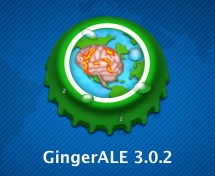Eligibility for Inclusion
Papers satisfying BrainMap criteria for inclusion will:
-
1. BE PUBLISHED IN ENGLISH LANGUAGE JOURNALS
Articles must be in English, be peer-reviewed and published
-
2. PAPERS SHOULD BE REPORTED IN STANDARD SPACE
This refers to the brain template used to align images (so for example MNI or Talairach).
-
3. PAPERS WILL BE BASED ON WHOLE-BRAIN IMAGING
The imaging modality used should cover the entire brain of the subjects. The whole-brain imaging criteria is somewhat lenient; we don’t exclude for incomplete coverage of the cerebellum due to a scanner's limited field of view. ---This criteria is primarily concerned with excluding studies which intentionally restrict the image acquisition to pre-selected regions of interest. ---This includes studies which use:
- region of interest (ROI) (e.g., seed ROI-using methods, such as psychophysiological interaction (PPI) experiments)
- volume of interest (VOI)
- small-volume correction (SVC)
- scaled sub-profile modeling (SSM), topography, contour, surface-based or otherwise mask-based techniques (e.g., surface-based morphometry (SBM)
- diffusion MRI (only exception is white-matter, diffusion measures such as fractional anisotropy (FA) and myelin water fraction studies (MWF))
For more information on registration, transforms, brain templates and reference spaces, see this video from Scribe's training video page:
Human Neuroimaging
BrainMap is funded by the National Institute of Mental Health (R01-MH074457) to compile, code and share neuroimaging results that enable meta-analysis of studies of human brain function and structure in healthy and diseased subjects.


